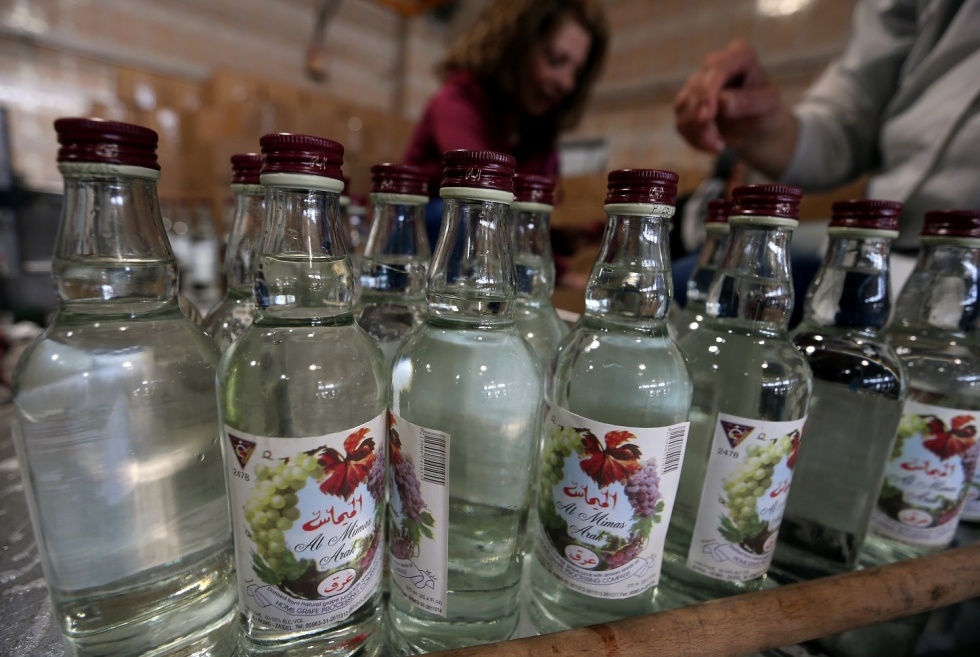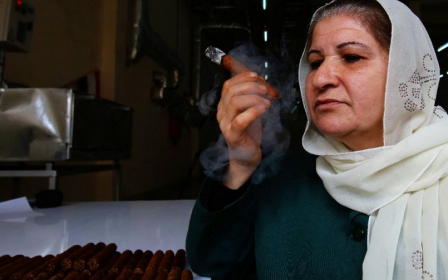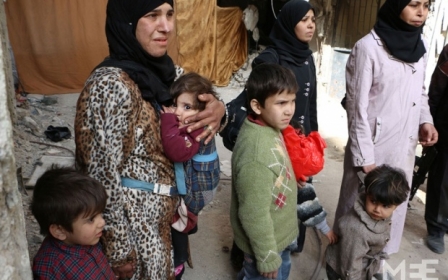Popular Syrian drink takes hit from the war

By Sammy Ketz
HOMS, Syria - Once a source of national pride, Syria’s national tipple arak has fallen victim to the country’s conflict, with a shrinking customer base, supply routes severed and cheap counterfeits aplenty.
The colourless liquor, made from fermented grapes flavoured with aniseed, is consumed throughout the Levant, mixed with water that turns it a milky white.
Before Syria’s conflict began in 2011, the country’s market was dominated by two state-run producers, but in the years since their business has struggled and cheap fakes have proliferated.
“At a restaurant, when the arak is fake, I either return the bottle or I give it to my mother, who uses it to wash the windows and chandeliers or to clean the dishes,” says Youssef, an engineer from Damascus.
“I use it as a hand sanitizer because the alcohol content in so high!”
State-run firms from al-Mimas and al-Rayan once made up 85 percent of Syria’s arak market, but they now account for less than half of it.
Al-Mimas, based in a Christian village near the central city of Homs, ruled along the coast and in Syria’s centre and east.
Al-Rayan controlled the market around Damascus and in the southern provinces, from its base in the Druze city of Sweida.
“Arak in Syria is like whisky in Scotland or wine in France. There’s a bottle on every table,” said Emile Awad, al-Mimas’s director general.
“We used to sell between 80,000 and 100,000 litres per month - around 125,000 bottles - but now it’s barely a third of what it was,” he lamented.
Profits slump
Al-Mimas’s profits have plummeted from 60 million Syrian pounds in 2009 ($1.2 million) to 30 million Syrian pounds in 2014 - a mere £120,000 at the current exchange rate.
Their business has been hit by a sharp devaluation of the national currency, as well as by the consequences of severed supply routes.
Their customer base has also withered as tourism dries up, territory falls to militants who ban alcohol and the country’s standard of living plummets.
And where demand still exists, the companies are now competing with a flood of new cheap fakes.
A lack of law enforcement and demand for cheaper products from customers with ever less to spend on luxuries has created a vibrant marker for the counterfeits.
While authentic arak is made of fermented grapes and 2.5 grams of aniseed per litre, the counterfeit brands use pure alcohol mixed with an aniseed substitute.
“Our product is copied everywhere. People think they’re drinking arak, but they’re drinking something else,” Awad said.
“Fake arak has seriously hurt us. It costs half as much as our arak. The competition isn’t about quality--it’s about price.”
At a relative’s wedding near his arak distillery in Zaidel, Awad had the unpleasant surprise of finding fake bottles of al-Mimas on the table.
Shocked, he spoke to the groom’s father, who told him it was simply a matter of pricing.
“It gives me migraine”
Competition has grown so fierce that the government dropped its arak tax in March from 35 percent to 20 percent a bottle.
It also slashed the price of al-Mimas and al-Rayan from 675 to 600 Syrian pounds ($2.40) in an effort to compete with the market’s newcomers, which sell their product for 300 to 450 Syrian pounds ($1.80).
In Akrameh, an Alawite-majority neighbourhood in the city of Homs, Sleiman Haidar, 67, had just bought a bottle of Abu Khalifa, a new brand, for 250 Syrian pounds ($1).
“I have been drinking arak for 50 years. It used to be delicious, but it doesn’t have the same taste today,” he admitted.
“I don’t buy from al-Mimas and al-Rayan because the bottles are so often fake, so I might as well buy a different, cheaper brand,” he said.
Abdel Rahman Tarraf, owner of the Pasha liquor store, has made a point to sell only authentic al-Mimas.
“I refuse to buy the fakes, even if my margin of profit would be 10 times higher. I don’t want to lose the trust of my clients or my reputation,” he said.
“Fake arak gives me such a terrible migraine, and I swore to myself I would never drink it again,” the 41 year old added.
“I always keep a bottle of real arak in my car since I don’t trust the other kinds.”
At the Cleopatra restaurant in Homs, Shade Hammud, dining with two pretty women, described arak as “the drink we serve with family and friends”.
“When it’s good, we joke, we discuss things in a good mood. But when it’s fake, it ruins the whole atmosphere.”
Middle East Eye propose une couverture et une analyse indépendantes et incomparables du Moyen-Orient, de l’Afrique du Nord et d’autres régions du monde. Pour en savoir plus sur la reprise de ce contenu et les frais qui s’appliquent, veuillez remplir ce formulaire [en anglais]. Pour en savoir plus sur MEE, cliquez ici [en anglais].




